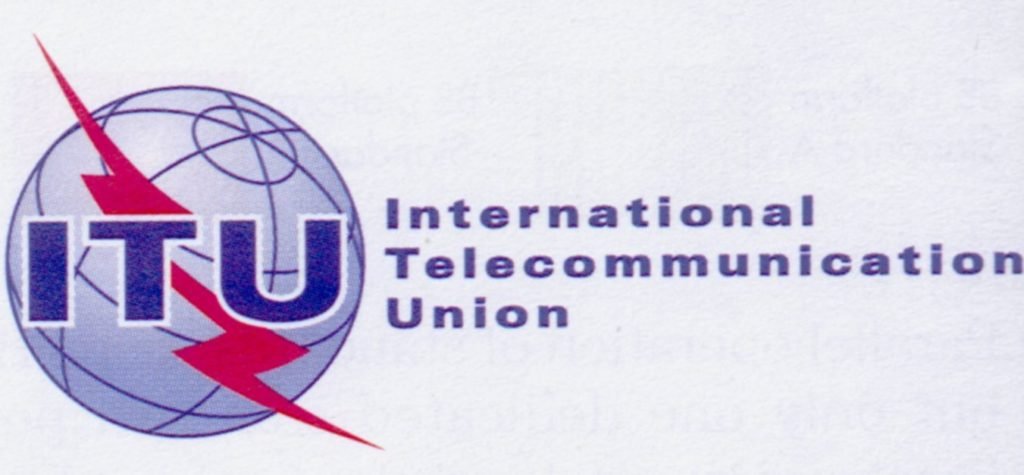
ITU-R : Remote sensing systems
Posted on |
ITU-R RS
Remote sensing systems
|
Frequency bands and bandwidths used for satellite passive remote sensing
|
|
|
Feasibility of sharing between active sensors used on Earth exploration and meteorological satellites and the radiolocation service
Note – Suppressed (RA-07) |
|
|
Frequency bands and required bandwidths used for spaceborne active sensors operating in the Earth exploration-satellite (active) and space research (active) services
|
|
|
Performance criteria for satellite passive remote sensing
Note – This Recommendation replaces Rec. ITU-R SA.1028-2 – Note – Withdrawn on 06/08/2012 (CACE/583) |
|
|
Interference criteria for satellite passive remote sensing
Note – This Recommendation replaces Rec. ITU-R SA.1029 2 – Note – Withdrawn on 06/08/2012 (CACE/583) |
|
|
Technical characteristics and performance criteria for systems in the meteorological aids service in the 403 MHz and 1 680 MHz bands
|
|
|
Performance and interference criteria for active spaceborne sensors
|
|
|
Feasibility of sharing between spaceborne passive sensors and the fixed service from 50 to 60 GHz
|
|
|
Feasibility of sharing between active spaceborne sensors and other services in the range 420-470 MHz
|
|
|
Feasibility of sharing between spaceborne cloud radars and other services in the range of 92-95 GHz
|
|
|
Sharing and coordination criteria for meteorological aids in the 400.15-406 MHz and 1 668.4-1 700 MHz bands
Note – This Recommendation replaces Rec. ITU-R SA.1262 – Suppressed on 18/02/11 (CACE/529) |
|
|
Interference criteria for meteorological aids operated in the 400.15-406 MHz and 1 668.4-1 700 MHz bands
|
|
|
Feasibility of frequency sharing between the meteorological aids service and the mobile-satellite service (Earth-to-space) in the 1 668.4-1 700 MHz band
|
|
|
Spectrum sharing between spaceborne passive sensors and inter-satellite links in the range 50.2-59.3 GHz
|
|
|
Selection of active spaceborne sensor emission characteristics to mitigate the potential for interference to terrestrial radars operating in frequency bands 1-10 GHz
|
|
|
Protection of stations in the radiolocation service from emissions from active spaceborne sensors in the band 13.4-13.75 GHz
|
|
|
Feasibility of sharing between wind profiler radars and active spaceborne sensors in the vicinity of 1 260 MHz
|
|
|
Sharing between the meteorological aids service and medical implant communication systems (MICS) operating in the mobile service in the frequency band 401-406 MHz
|
|
|
Feasibility of sharing between radionavigation-satellite service receivers and the Earth exploration-satellite (active) and space research (active) services in the 1 215-1 260 MHz band
|
|
|
Sharing between spaceborne passive sensors and the inter-satellite service operating near 118 and 183 GHz
|
|
|
Feasibility of sharing between the FSS (space-to-Earth) and the Earth exploration-satellite (passive) and space research (passive) services in the band 18.6-18.8 GHz
|
|
|
Sharing between the Earth exploration-satellite (passive) and airborne altimeters in the aeronautical radionavigation service in the band 4 200-4 400 MHz
|
|
|
Feasibility of sharing in the band 35.5-36 GHZ between the Earth exploration-satellite service (active) and space research service (active), and other services allocated in this band
|
|
|
Sharing in the band 5 250-5 350 MHz between the Earth exploration-satellite service (active) and wireless access systems (including radio local area networks) in the mobile service
|
|
|
Technical and operational characteristics of ground-based meteorological aids systems operating in the frequency range 272-750 THz
|
|
|
Use of the band 1 668.4 1 710 MHz by the meteorological aids service and meteorological-satellite service (space-to-Earth)
|
|
|
Mitigation technique to facilitate the use of the 1 215-1 300 MHz band by the Earth exploration-satellite service (active) and the space research service (active)
|
|
|
Technical and operational characteristics for passive sensors in the Earth exploration-satellite (passive) service to facilitate sharing of the 10.6-10.68 GHz and 36-37 GHz bands with the fixed and mobile services
|
|
|
Technical and operational characteristics of Earth exploration-satellite service (EESS) systems operating above 3 000 GHz
|
|
|
Reference antenna pattern for passive sensors operating in the Earth exploration-satellite service (passive) to be used in compatibility analyses in the frequency range 1.4-100 GHz
|
|
|
Characterization and assessment of aggregate interference to the Earth exploration-satellite service (passive) sensor operations from multiple sources of man-made emissions
|
|
|
Use of remote sensing systems for data collection to be used in the event of natural disasters and similar emergencies
|
|
|
Typical technical and operational characteristics of Earth exploration-satellite service (passive) systems using allocations between 1.4 and 275 GHz
|
|
|
Protection criteria for arrival time difference receivers operating in the meteorological aids service in the frequency band 9-11.3 kHz
|
|
|
Use of remote sensing systems in the study of climate change and the effects thereof
|
|
|
Methodology for determining terrestrial and space-to-Earth sharing and coordination criteria for meteorological aids in the 400.15-406 MHz and 1 668 1 700 MHz bands
|
|
|
Performance and interference criteria for satellite passive remote sensing
|
|
|
Typical technical and operating characteristics for spaceborne radar sounder systems using the 40-50 MHz band
|
|
|
Characteristics of synthetic aperture radars operating in the Earth exploration-satellite service (active) around 9 600 MHz
|
|
|
Typical technical and operating characteristics and frequency bands used by space research service (passive) observation systems
|
|
|
Protection of space research service (SRS) space-to-Earth links in the 8 400-8 450 MHz and 8 450-8 500 MHz bands from unwanted emissions of synthetic aperture radars operating in the Earth exploration-satellite service (active) around 9 600 MHz
|
|
|
Protection of the radio astronomy service in the frequency band 10.6-10.7 GHz from unwanted emissions of synthetic aperture radars operating in the Earth exploration-satellite service (active) around 9 600 MHz
|
Books you may interested
 |
 |
 |
 |
 |
 |
